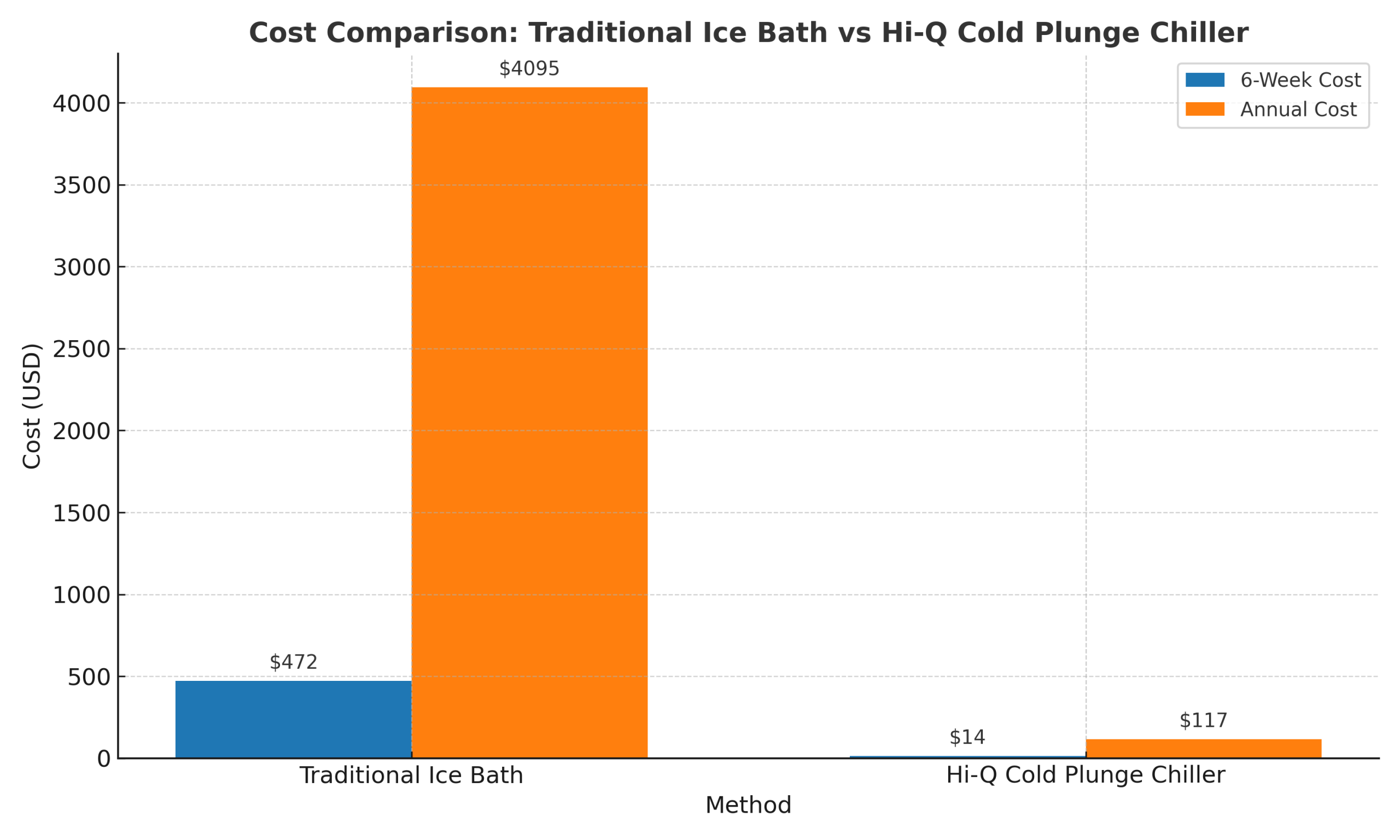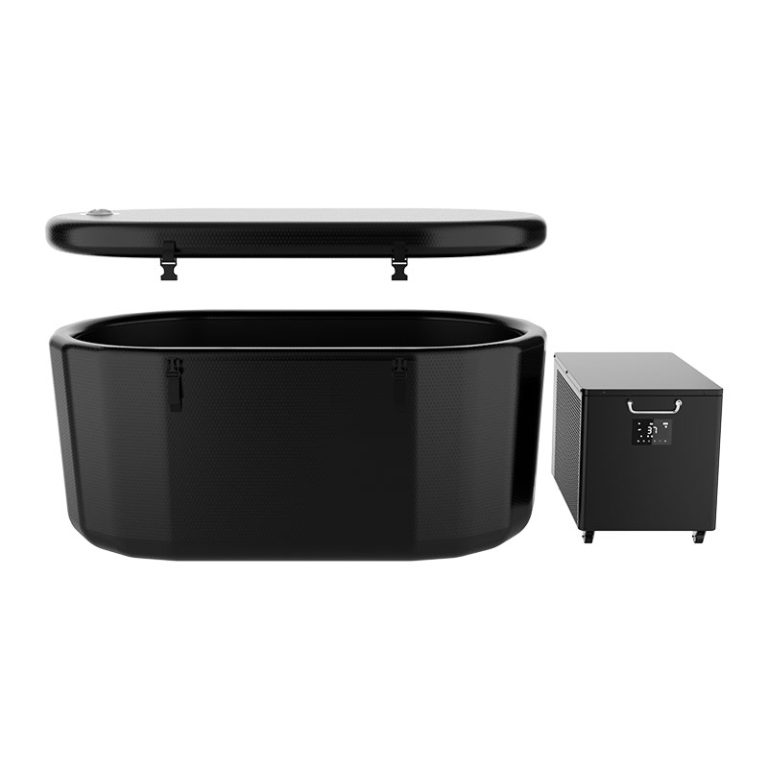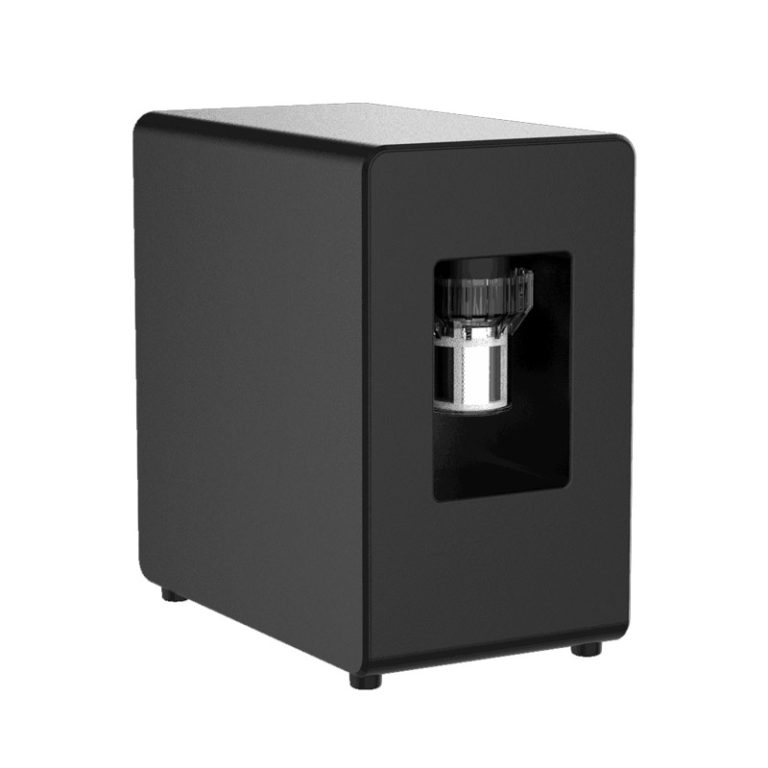Exploring Temperature Control, Timing, Technology, and True Cost Efficiency
For millions living with migraines, conventional treatments often fall short. As alternative therapies gain momentum, cold plunge therapy is emerging as a promising solution—especially when supported by precision-engineered systems. This guide blends scientific research with modern technology and practical cost analysis to help you safely and effectively leverage cold therapy for migraine relief.

1. Precision Matters: Finding Your Ideal Water Temperature
Therapeutic cold exposure generally ranges between 4°C to 15°C (39°F to 59°F). Studies suggest:
- 10–15°C (50–59°F): Ideal for beginners. Activates cold shock proteins without overwhelming the nervous system.
- 4–10°C (39–50°F): Recommended for experienced users. Clinical data shows a 28% reduction in inflammation markers (Journal of Pain Research, 2021).
Tech Advantage: Modern cold plunge chillers, like the Hi-Q Cold Bath Chiller, offer precise temperature control across this therapeutic range. Unlike traditional ice baths that fluctuate by ±3°C, Hi-Q’s dual-compressor system maintains ±0.5°C accuracy—critical for replicating clinical-grade cold exposure at home.
2. Chronotherapy: When Should You Immerse?
Migraine attacks often follow circadian rhythms. If your symptoms typically begin around 9:00 AM:
- Preventive Strategy: Immerse 5-10 mins according to the self condition (7:30–8:00 AM).
- Acute Relief: Begin within 15 minutes of first symptoms (aura, tingling).
Automation Advantage: The Hi-Q chiller features a Smart Schedule function, allowing daily or weekly session programming. Research (Frontiers in Neurology, 2023) suggests consistent morning cold exposure may reset the HPA axis, a core factor in migraine onset.
3. Duration & Temperature Consistency: Why Stability Matters
Recommended Immersion Durations:
- Beginner: 1–2 minutes at 12–15°C
- Intermediate: 2–3 minutes at 8–12°C
- Advanced: 3–5 minutes at 4–8°C
Traditional Ice Baths vs. Hi-Q Systems: Traditional ice baths create uneven temperature zones (surface: 0°C; bottom: 8°C), leading to inconsistent outcomes. Hi-Q’s vortex circulation ensures homogeneous water temperature, enabling:
- Therapeutic results in 30% less time
- Reduced risk of cold burns from ice chunk contact
4. Fast Answers to Common Questions
Heat Contrast Therapy: Alternate cold plunges with sauna (45–60°C) if tolerated. This boosts HSP70 proteins, helping mitigate cellular stress.
Frequency:
- Prevention: 3–5 sessions/week
- Acute care: 1 session/day (max)
Optimization Tips:
- Use rhythmic breathing: 4s inhale through nose, 6s exhale through mouth
- Try waterproof EEG devices (e.g., Muse Headband) to track brainwave shifts
Community Data: A 2023 survey of 1,200 migraine sufferers found:
- 41% reported ≥50% symptom reduction with controlled cold therapy
- Only 12% reported similar benefits using ice baths
5. A Realistic Cold Therapy Cycle: Duration, Cost & Efficiency

While cold immersion is effective, long-term success depends on sustainability—both physically and financially.
Recommended Protocol Duration: 4–6 weeks
- 3–5 sessions per week
- Morning immersion (7:30–8:00 AM)
- Gradual temperature decrease over time
The Hidden Cost of Ice

- Average session: 5H to setting temp= 5 kWh/day
- 6-week cost: ~90 kWh × $0.15/kWh = $13.5
- Annual cost: ~$117
Ice Bath vs. Chiller: Cost Comparison

Visual Cost Comparison:

6. Why Precision Engineering Changes Everything
Migraine-prone brains thrive on predictability.

78% of recent clinical trials now use precision-controlled systems.

7. A Proven Home Protocol
Step-by-Step:
1. Program Hi-Q chiller to 12°C at 7:30 AM
2. Immerse for 90 seconds (use built-in timer)
3. Reduce temperature by 1°C weekly as tolerated
Wearable Data Results:
22% reduction in cortisol spikes during trigger periods
17% improvement in HRV within 3 weeks
The Future Is Controllable
As biohacking meets neurological health, precision-controlled cold therapy delivers what ice baths cannot: consistent, data-driven, repeatable relief. With Hi-Q’s engineered systems, migraine sufferers finally gain a reliable, clinically sound way to validate and optimize their cold therapy regimen—one stable degree at a time.
Hi-Q Group — The Top 1 Cold Therapy Solutions Supplier.
Contact us today for wholesale pricing, custom branding, or free samples.






